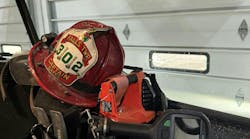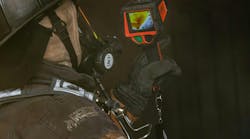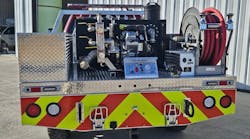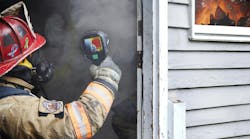With the ever-growing development of new technologies for the fire service, many fire departments are scrambling to implement and deploy the latest and most sophisticated products available for firefighters. As technology tools go, thermal imagers (TIs) are at the forefront of this implementation.
Not that long ago, the range and sophistication of thermal imaging products were limited. Most manufacturers carried one or two models. Those that offered more than one model did little to differentiate them. Designs were identical and featuring similar. Today, essentially every manufacturer offers multiple products, and their features and technology options have proliferated. With this, the marketing message has become more sophisticated. Like any marketing activity, this messaging is designed to create sales first and foremost, while customer education and precision are secondary. For the fire department looking to purchase, the cautionary warning is caveat emptor (“let the buyer beware”).
At its core, a thermal imager accomplishes a vital primary task for any emergency responder. It provides the ability to see in visible light denied environments. This means seeing through smoke or other particulates and seeing in complete darkness. Whether navigating safely or locating imperiled victims, this benefit is obvious.
Beyond this basic benefit, thermal imagers designed for firefighting have evolved to provide sophisticated scene interpretation (helping firefighters understand heat layers and potential emerging threats), to pinpoint where hot spots are located, to transmit and record information for training purposes or for interpretation by others on scene or even to give directional guidance to a team that is moving through a structure. In short, TIs have become more much more complex devices.
This is not necessarily a bad thing. Several features offered on modern TIs are very valuable. As fire departments become accustomed to using thermal imagers, the expectation of more power in their hands is understandable. Still, a good rule of thumb I often tell firefighters is, “Make sure your thermal imager keeps you focused on your task and not on the tool.” The ability to have a whiz-bang feature on the TI doesn’t mean it should be there. Excess features and indicators clutter up the viewable image. At worst, they distract or confuse firefighters requiring them to focus on the tool while the situation around them may actually require their full attention.
Cost vs. complexity
Some TIs provide limited features that focus mostly on addressing the primary need of seeing through smoke. These are typically smaller, less-expensive products that are also easier to use. Other TIs are equipped with an assortment of features and options and often have higher-resolution imagery. These units are typically larger and heavier with bigger displays. It also tends to hold that the more features and options there are on a TI, the more expensive it will be. Fire departments must carefully analyze the trade-offs of cost and complexity with potentially increased capability and performance so that they make informed decisions. Likewise, those charged with evaluating TIs should thoroughly examine a TI’s ergonomics and durability. How will it be used and by whom? Are size and weight critical? Will the unit withstand the harsh environment of firefighting?
I’ve seen fire departments purchase TIs they deemed to be “the best” because they are simply the most expensive or have the most features. Sometimes, a grant allocation affords this luxury and other times it’s just a normal consumer inclination to err on the side of selecting a product that has every feature that might ever be needed. I’ve also seen departments purchase very basic products only to be disappointed that what they presumed to be a standard feature wasn’t part of the package.
Recently, some acquaintances of mine went through the TI selection process. Their fire department was fortunate to have acquired plenty of funds to spend on a thermal imager. They formed a committee to conduct the TI selection assisted by the department’s firefighters. The committee quickly narrowed down the choices and then asked the firefighters to evaluate the qualifying TIs. The process began to stall, though, because of differing desires of the firefighters. Younger, aggressively minded firefighters were immediately drawn to smaller, lighter thermal imagers. This group was willing to forego larger displays and better image clarity to get the lightest-weight, easiest-to-wield unit. The more seasoned firefighters were drawn to larger, heavier models offering bigger, easier-to-see displays.
One firefighter in the group advocating for smaller TIs researched the benefits of multiple thermal imagers, citing decreased search times, lower costs and a general higher level of safety. This research resonated with the committee members, and ultimately the department purchased two basic thermal imagers instead of the one unit originally budgeted. For this department, having “more eyes on the fire” became a deciding factor.
Choosing a thermal imager is not easy. Many options are available, and departments that conduct formal evaluations will surely hear many reasons as to why one particular model is better than the next. Not everyone will agree. Those making these critical decisions must weigh many factors, making the best decision for the department after considering costs, effectiveness, safety and anything else specific to the department’s needs.
Thermal imagers are tremendous tools when used to their maximum benefit, but the selection process is no simple task. Fire departments that are making the important decision to outfit their operations with TIs should take care to choose wisely.





